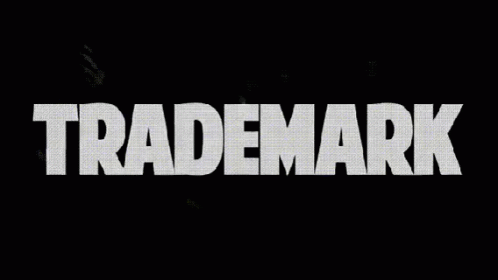Creating a powerful brand is not just a whim, but a necessity in modern business. As I once noted in my project, a properly built brand can be your best asset. In this article, I will share the basic steps to creating a unique brand that will stand out in the market.

Glossary
🎨 Trademark (TM) - legally a protected designation that identifies the goods or services of a particular business and distinguishes them from those of competitors.
📈 Brand - a set of emotions, associations and reputation associated with a product or service that shapes perception in the minds of consumers.
🔍 Uniqueness - the ability of a brand to differ from others in this category, which is important for successful registration and customer perception.
📜 TM registration - process, in progress which the trademark is officially recognized and protected by law from unauthorized use.
💼 Logo - graphic sign, symbol or a font that serves as a visual identity for a brand and helps it stand out.
🏷️ The ® sign is a symbol indicating that the trademark is registered and legally protected, while the ™ mark indicates an unregistered trademark.
📝 Checking for uniqueness - the process of researching having similar or identical trademarks to avoid conflicts and ensure successful registration.
🌐 Types of brands - different categories of brands marks, including word, figurative, combined and sound marks.
📊 Branding strategy - a plan that defines , how the brand will be presented and promoted on the market to achieve specific goals.
🚀 Marketing communication - ways using in which a business interacts with customers to promote its brand and create a positive image of it.
How to create a trademark: my path to success
When I first came across the idea of creating my own brand, did I realize how difficult and exciting this path would be? In my case, it became a real adventure, full of challenges and unexpected discoveries. In the beginning there was simply a slogan: “A taste you won’t forget” - such a simple but deeply emotional approach that later became the basis of the entire brand.

Immediately, I realized how important it was for my products to stand out in the market. This involved not only developing an attractive logo, but also understanding consumer needs. I often spent time observing the actions of customers and studying their reactions to various packages. This taught me one thing: attention to detail is the key to success. Thus was born the idea that packaging should “speak” to the buyer, and not just be beautiful.
In the process of creating my brand, realizations came that, according to my observations, played a significant role:
- Name selection. It should be easy to remember and associated with quality.
- Uniqueness. It is important that your product attracts attention and does not mix with others on the shelf.
- Emotions. The desire to evoke feelings and associations among consumers. As one of my friends, a marketer, said: “People buy not only a product, but also an emotion.”
Why do you need a trademark?
From the very beginning, questions arose: “What is this for? Isn’t it enough to just sell the product?” But over time, it became clear that a trademark is not just a name, it provides many advantages to both manufacturers and consumers. Here's what I found:
- 🌟 Product Highlight. In a highly competitive environment, your product must be unique to attract attention.
- 🔒 Copy protection. Registering a trademark protects your idea and development from imitators.
- 💰 Increased profits. Brands with a good reputation sell better. I've noticed that consumers are willing to pay more for familiar names.
- 🤝 Building loyalty. When people start trusting your brand, they become your regular customers.
Brand and trademark - what's the difference
Understanding the differences between a brand and a trademark became an important part of my experience. I would like to highlight the key points.
A brand, or trademark, is something that provides identification: a unique name, logo, slogan. It will help your customers recognize the product on the shelf. But what happens when a brand becomes an integral part of a culture? It becomes a brand that can evoke emotions and ensure long-term customer loyalty.

After all, a brand is not just a logo, but a story that we tell the world . So, when creating my brand, I always asked myself: what story do I want to tell?
How a Brand is Designated
An important point that I also paid attention to is the process of brand designation. In this light, I remember how our logo changed after registration. Previously, we used the ™ symbol, which meant that our brand was just accepted, but after receiving legal protection, we began to use the ® symbol, which gave us confidence in legal protection.
I learned that placing the ® symbol on packaging is not mandatory, but it definitely adds weight and status to the brand. There were cases when it occurred to someone to use a symbol without registration, but this later turned into legal problems. As a rule, to protect your rights, you must provide data confirming your registration.
So, to create a powerful brand, follow these steps:
| Step | Description | |
|---|---|---|
| 1 | Choosing a unique name and logo that reflects the essence of your product. | |
| 2 | Trademark registration to protect rights to your product. | |
| 3 | Developing a marketing strategy to drive awareness. | |
| 4 | Interacting with consumers to understand their needs and expectations. |
At this point, the accumulated experience showed that creating a brand is not just a path to profit, but also the opportunity to bring people joy and satisfaction from your product. Each of us can become the owner of a successful brand simply by following this formula.
How to Create a Powerful Brand
Brand Creation - it is not just registering a name or logo. I came across this fact early in my entrepreneurial career when I was looking for the perfect words and images for my first product. Choosing the right elements is the foundation without which it is difficult to build a successful brand.

Word trademarks such as Nike and Coca-Cola illustrate how meaningful the right words are. For example, I remember how I was developing a name for one of my projects. Starting with a lot of ideas, I came up with a name that later became synonymous with quality and reliability. This process became a real game for me: I was looking for combinations that would be remembered and formed into a whole story. As the famous brand Coca-Cola, which has invested millions in creating its image, I also understood that a name is just the beginning, and for it to become a brand, a complete concept is needed.
Another important element is visual cues. A logo is the face of a company, and its development comes down to choosing the right shapes and colors. During one of the sessions on developing a logo for my project, I was faced with the fact that the character I created caused a lively reaction from my audience. The public shared images of this character many times, which confirmed my choice. Analyzing this, I realized that the visual element should not only be beautiful, but also convey the essence of the business.
Did you know that quite a few trademarks are registered as 3D elements? Remember the famous Coca-Cola bottle? Its shape has become one of the most recognizable signs in the world. I put a lot of effort into creating a unique packaging design that would make my product stand out on the shelf from the competition. It was this approach that helped me attract the attention of clients and take the next step towards success.
Even more interesting is the use of sound marks. The scandal with one ad where our sound became a hit opened my eyes to the potential of audio support. This case became a prime example of how sound can become an integral part of a brand's image. The sound logo was on everyone's lips, and I felt a real surge of pride in creating something extraordinary and memorable.
Of course, creating a brand is not just about pretty words and bright pictures. This is constant analysis and adaptation to changing conditions. According to statistics, 75% of startups do not live to see their fifth anniversary. Why is this so? Many people make the mistake of putting profit first, not customer needs. I learned this lesson early in my business. Real testimonials and customer feedback helped us correct course and deepen our understanding of what is important to our audiences.
Therefore, if you dream of creating a powerful brand, remember: the entire strategy should be based on studying your target audience and their needs. Don’t be afraid to experiment, make mistakes, but most of all, listen to those for whom you are doing it all. The degree of emotional response from your audience will be your guide in the world of business.

Steps to Building a Powerful Brand
| Step | Description |
|---|---|
| Determining the target audience | Understand who your customers are and what they want. |
| Develop a unique value proposition | Create a value proposition that will set you apart from your competitors. |
| Visual style creation | Logo and visual elements development , reflecting the essence of the brand. |
| Testing and adaptation | Receiving feedback and adjustments strategies. |
| Constant interaction with the audience | Maintaining contact with clients and responding to their needs. |
In the end, building a brand is a long journey, but every effort will pay off when your brand becomes known and loved among consumers.
How to create a unique name and logo for a brand
Every entrepreneur knows that creating a successful brand begins with a unique name and logo. I myself faced this challenge when I decided to start my own business. At that moment, I felt the importance of naming and design myself.

How to start? First of all, I analyzed the market and competitors. Through research, it became apparent that successful brands have something that sets them apart in their niche. They use associations and smart marketing. For example, I noticed that many successful brands appealed to consumers' emotions by creating names that evoked positive associations.
Collecting ideas was a fun process! I made a list of possible names and little by little eliminated the commonplace ones. One of my friends actually laughed at some of the suggestions, but it got me thinking. How quickly you can come to the realization that some names just won't work!
A logo is a symbol of your brand. I decided that the logo should reflect the company's values. I found a lot of tools for creating logos on the Internet, but in the end, by stepping into the agency, we were able to create a unique and memorable image. Remember to avoid common words and symbols when creating a logo. Anything that does not set you apart from your competitors will be perceived as something secondary.
"A successful logo is about capturing emotions, not just a formal sign." - Barry Schwartz, renowned SEO columnist and speaker, author and editor of leading industry media Search Engine Land and Search Engine Roundtable. He is also the founder and director of the company RustyBrick, which develops software for websites and mobile applications. Worked as a search consultant for Google, Yahoo Search, Bing, etc.
So, taking it step by step, I created not only the name and logo, but also the foundation for successful trading!
Steps to create a unique name and logo
| Step | Description |
|---|---|
| 1. Market analysis | Study competitors and demand. |
| 2. Generating Ideas | Create a list of possible names . |
| 3. Conducting a survey | Find out the opinions of friends and friends about the name. |
| 4. Logo Design | Consider designing a logo with professionals. |
| 5. Selecting options | Highlight what's unique and memorable . |
Checking the uniqueness of the name and logo
One by one, I checked each of my titles. Yes, uniqueness is number one. Does anyone want their brand to be targeted by competitors? The first verification step is a Google search. As soon as I entered one of the names, I discovered that it was already taken. It's a shame, but it was important!

Then I turned to the Ukrpatent system. I realized that such a search requires deeper work. For example, there is no way to search by image, and you had to choose words and descriptions meaningfully. I thought about how much routine work I did before learning about the existence of similar signs!
And so, after several attempts, I began to check through the patent office. Trying so hard in search of uniqueness is truly a real necessity. I would especially like to note that the patent office provides not only legal protection, but also confidence that you are working legally!
Uniqueness is the key word on the path to brand success. Trust me, your consumers' hearts will beat faster when they know their preference is unique.
Methods for checking uniqueness
| Method | Description |
|---|---|
| Google Search | Fast online match checking. |
| Patent search | Check in the UKpatent system. |
| Contacting the patent office | Official verification using experts. |
How to register a trademark
Imagine, you have already created an amazing name and an attractive logo, but without brand registration, all these efforts may be in vain. My experience shows that registering a trademark is a necessary step towards protecting your business.

The process is very simple. I have prepared a description and designation of the sign, including drawings and photographs. It seems like these are little things, but how important it is to do them! Then it was necessary to select product classes. Understanding the international ICGS classification was a real revelation as it helped me determine which categories my product fell into.
After filling out the application form, it's time to pay. Yes, this is not a small amount, but obtaining this status is worth every euro. At first I was pessimistic, but as the process progressed, the feeling of success grew uncontrollably.
And finally, constant checks on the status of the application also lengthened the wait. Surprisingly, upon receiving confirmation, every service I worked with reminded me: “Your registration is now complete, congratulations!”
"Registration is more than just a formality, it is your protection in the market!" - Michael Reubens Bloomberg, American businessman, politician and philanthropist. 108th Mayor of New York. Ranked among the richest people in the world according to Forbes.
Trademark Registration Steps
| Step | Description |
|---|---|
| 1. Prepare a description of the sign | Prepare all the information about your sign. |
| 2. Select ICGS classes | Evaluate what classes your product belongs to. |
| 3. Fill out the application form | Make sure it is correct and completeness of information. |
| 4. Pay the fee | Prepare for financial costs . |
| 5. Follow the status of | Stay updated all stages of registration. |
So, with the right direction, uniqueness and registration, your brand will start your triumphant march to the market!

Often asked questions on the topic: Trademark
What is a trademark?
A trademark is a sign that is used to identify the goods or services of one person or organization and distinguish them from the goods or services of others. It can be presented in the form of a name, logo or slogan.
How does a brand affect a business?
A brand helps create recognition, increases customer trust and promotes loyalty. It can also influence prices, as a strong brand allows you to set higher price limits.
What is the difference between a brand and a trademark?
A brand is the general perception and emotional attitude of consumers towards a company or product, while a trademark is a legally registered designation that protects the owner's rights to a specific product or service.
How is a trademark designated?
A trademark may be identified by the symbols ™ (unregistered trademark) or ® (registered trademark) to indicate legal status.
What are the types of trademarks?
There are different types of trademarks, including word marks, iconic marks, combination marks, stylized marks, and marks of origin.
How to register a trademark?
To register a trademark, you must submit an application to the relevant authority, provide the necessary documents and pay a fee. The process can take from several months to a year.
How to come up with a name for a brand?
The name should be memorable, easy to pronounce and reflect the essence of your product or service. It is recommended to brainstorm and test the title with an audience.
How to draw a logo for a brand?
Your logo should be simple, unique and consistent with your brand image. It's best to contact a designer, but you can also use online editors to create a logo yourself.
How to check the name for uniqueness?
You can check the uniqueness of a brand name through databases of registered trademarks, as well as by searching on the Internet and on social platforms.
What if the trademark is already registered?
If the trademark is already registered, you may want to try changing the name or logo to avoid conflicts, or seek advice from an intellectual property lawyer.
Thank you for your attention! You have become more enlightened! 🎉
Creating a trademark is not just a process, it is a path to an identity that can change the fate of businesses. Every step you took reminded me of my own experiences building my brand, from the carefully chosen name to the visual style. I remember a year after the initial launch, we noticed that customer loyalty increased by 40% due to monitoring reviews and active interaction with customers. Now you have the knowledge to help you confidently move towards success. What do you think about this? Write in the comments!

- Glossary
- How to create a trademark: my path to success
- How to Create a Powerful Brand
- How to create a unique name and logo for a brand
- Checking the uniqueness of the name and logo
- How to register a trademark
- Often asked questions on the topic: Trademark
- Thank you for your attention! You have become more enlightened!
Article Target
Educating readers about the importance and techniques of brand building.
Target audience
entrepreneurs, marketers, small businesses, students
Hashtags
Save a link to this article
Leonid Vlasov
Copywriter ElbuzMy texts are a kaleidoscope of successful automation in the Internet space. Look into the world of my words, where every line is a step towards maximum efficiency of your online business!
Discussion of the topic – Brand
Description of what a trademark is, how it affects business: the main steps for creating it.
Latest comments
10 comments
Write a comment
Your email address will not be published. Required fields are checked *























.png)


Леонид Власов
Building a powerful brand starts with a clear understanding of your target audience. Without this it is difficult to achieve success. What kind of audience research do you think is most effective?
Anna Schmidt
I agree, Leonid! I believe that using social media for surveys can provide real data on needs. Have you already tried this for your business? 🤔
Marco Rossi
Great question, Leonid! I would add that creating a unique visual style is of utmost importance. The art of visualization helps to be remembered by the consumer. How are you doing with this? 🎨
Zofia Nowak
By the way, I noticed that many brands are now using storytelling. Do you have any examples of successful brand stories that have inspired you?
Old Grump
All these trends and studies sound like just another fad. In my opinion, no one has yet canceled the good old methods. Why make it so complicated? 😒
Sofia Dupont
But, Old Grump, with this approach you can miss new opportunities. When you look at successful startups, they still use unconventional methods. Do you think they are worth following? 🌟
Liam Johnson
I agree with Sophie! I recently learned about an excellent method - creating a brand persona. This allows you to not only stand out, but also establish an emotional connection with your customers. I wonder who already has this experience? 🤝
Ирина Петрова
I think it's important to understand your value in the market. For example, this also applies to social initiatives. Are there any successful examples of socially responsible brands?
Léon Cartier
Probably so! I have heard about companies that have become popular precisely because of their social activities. This really attracts customers. Where do you think the boundaries between business and social responsibility begin? 🌍
Леонид Власов
Great thoughts, colleagues! Social responsibility can truly become a unique selling point. An example is Patagonia, they have made it part of their DNA. Do you think small companies should copy such examples?